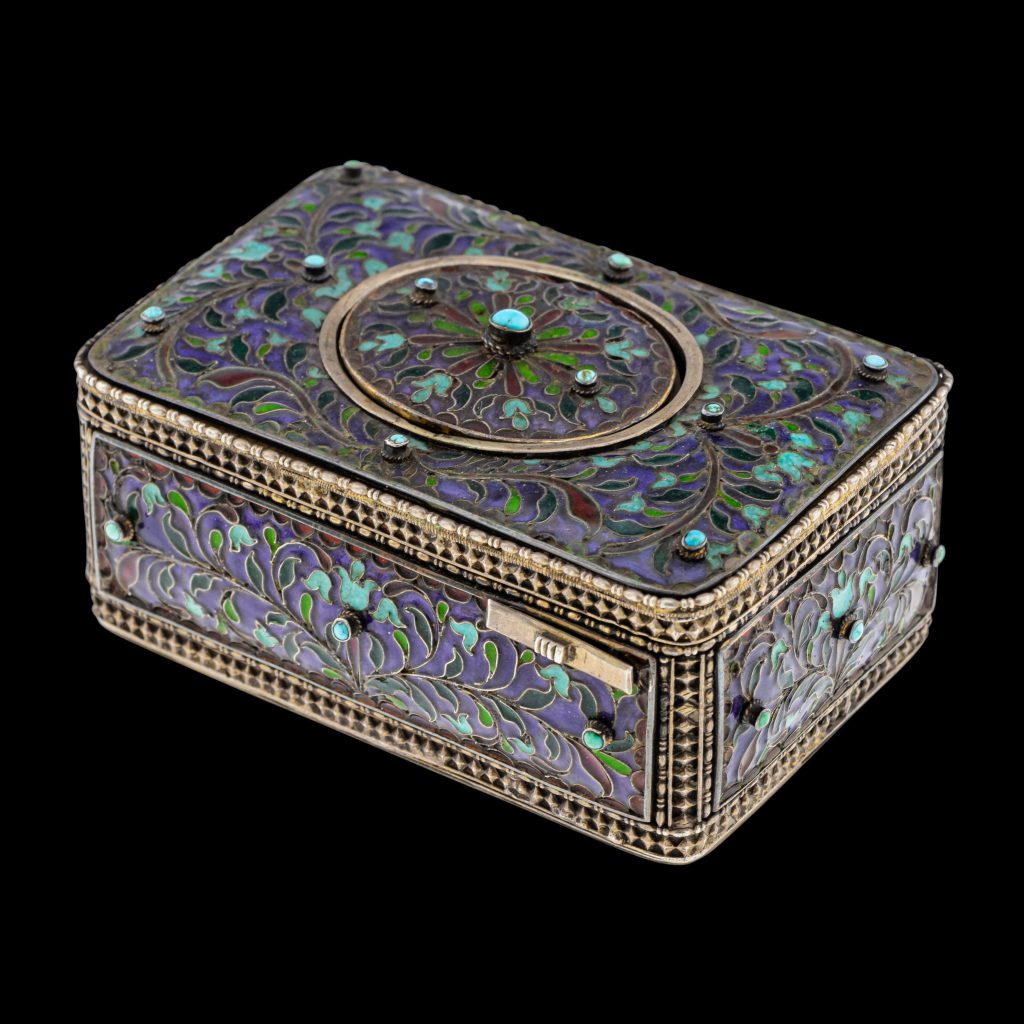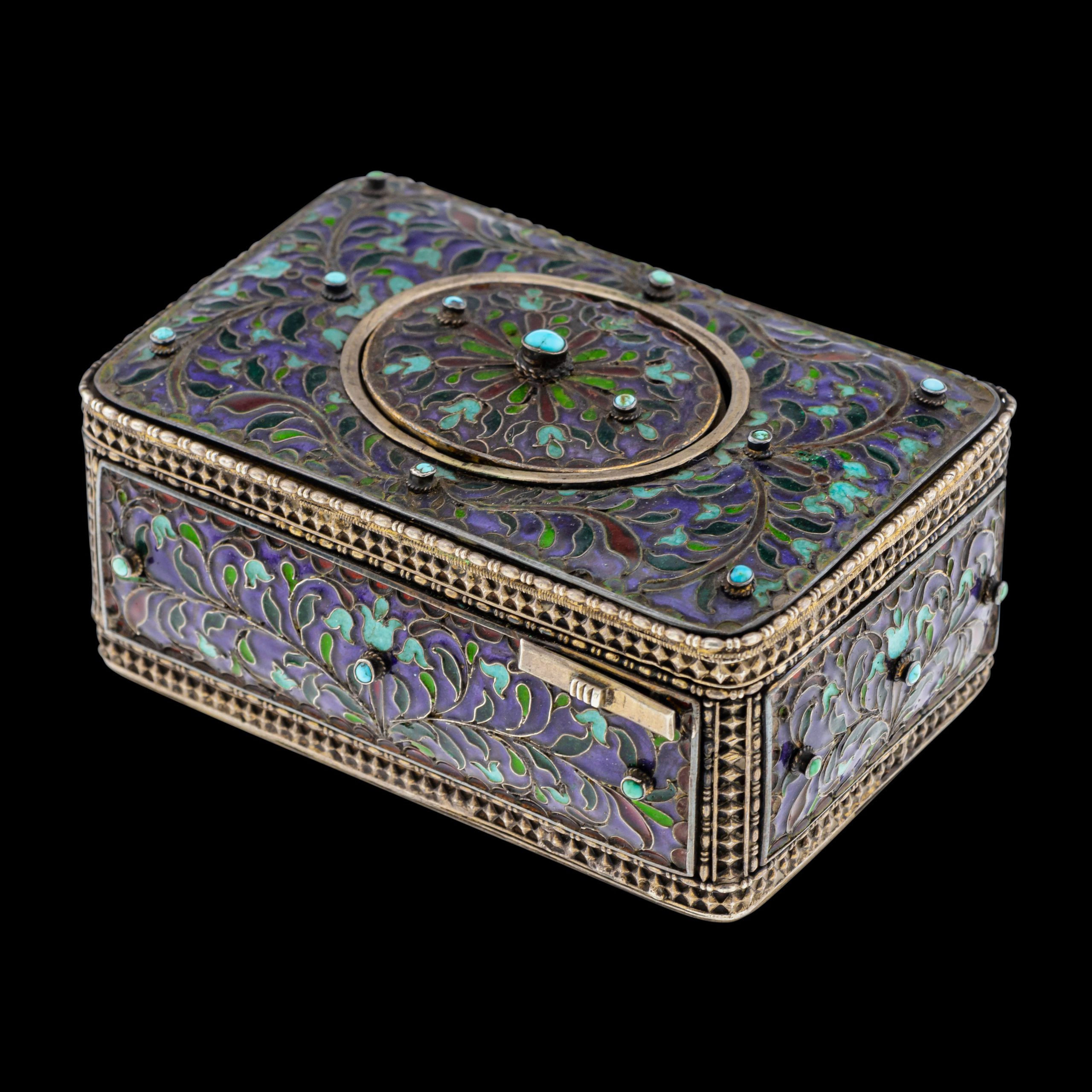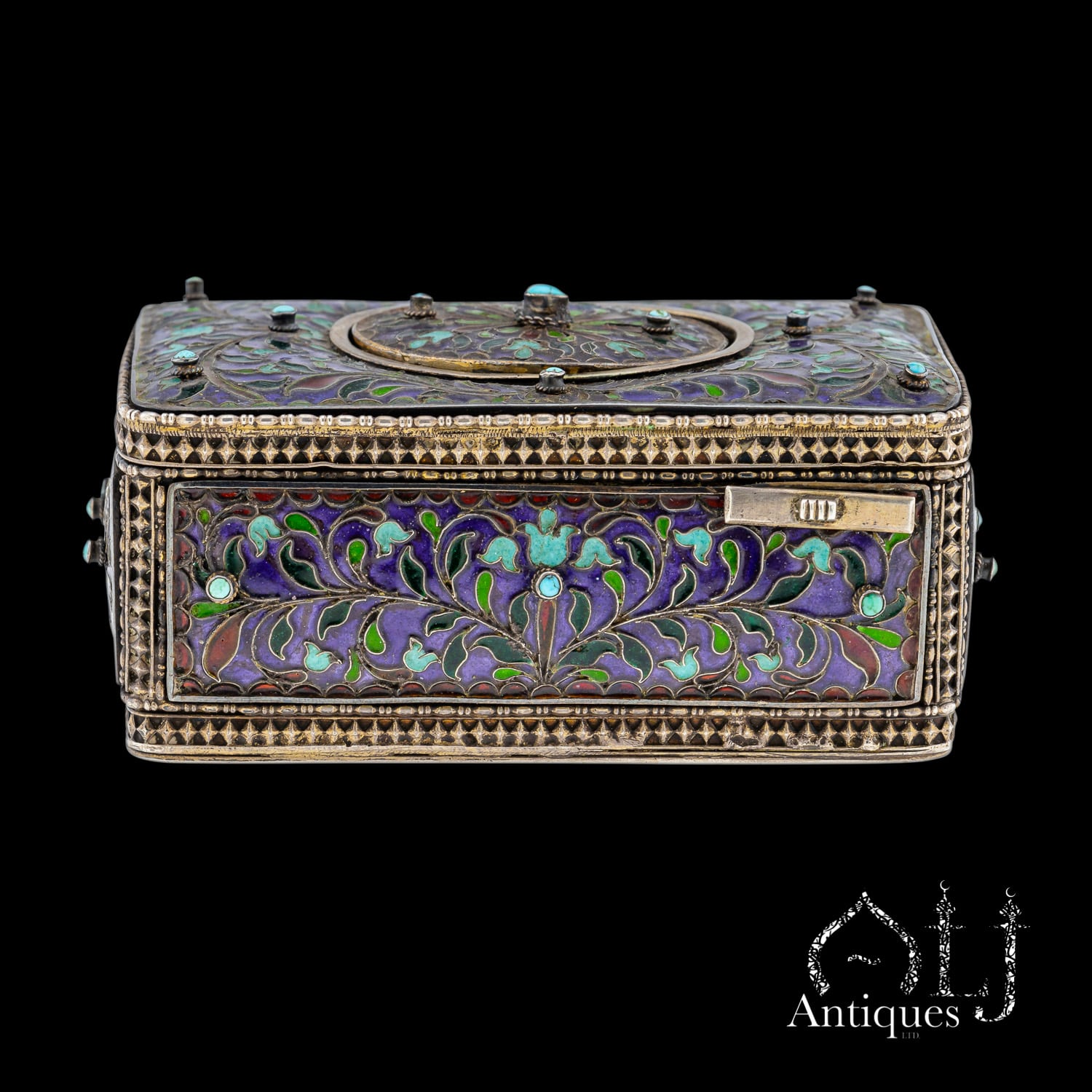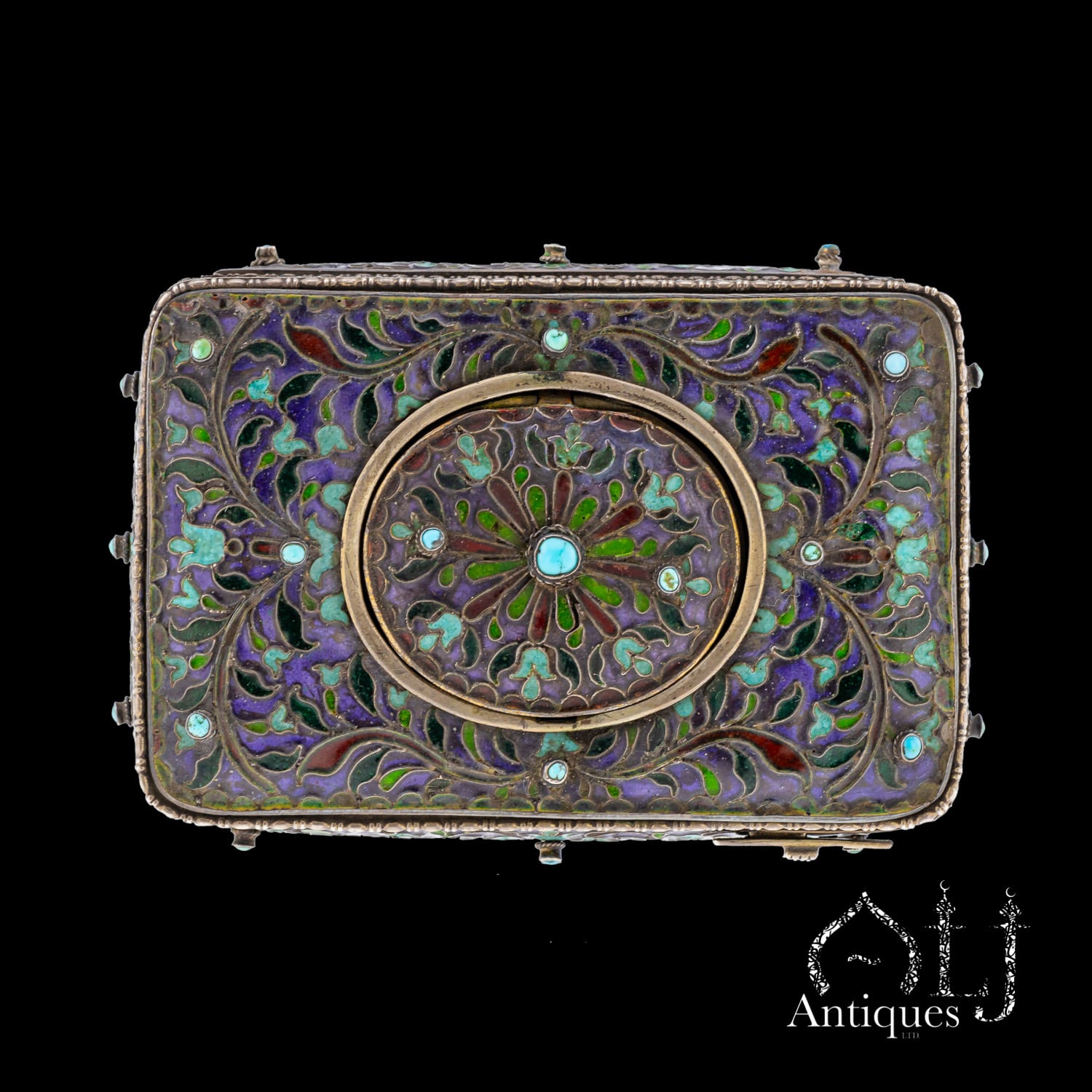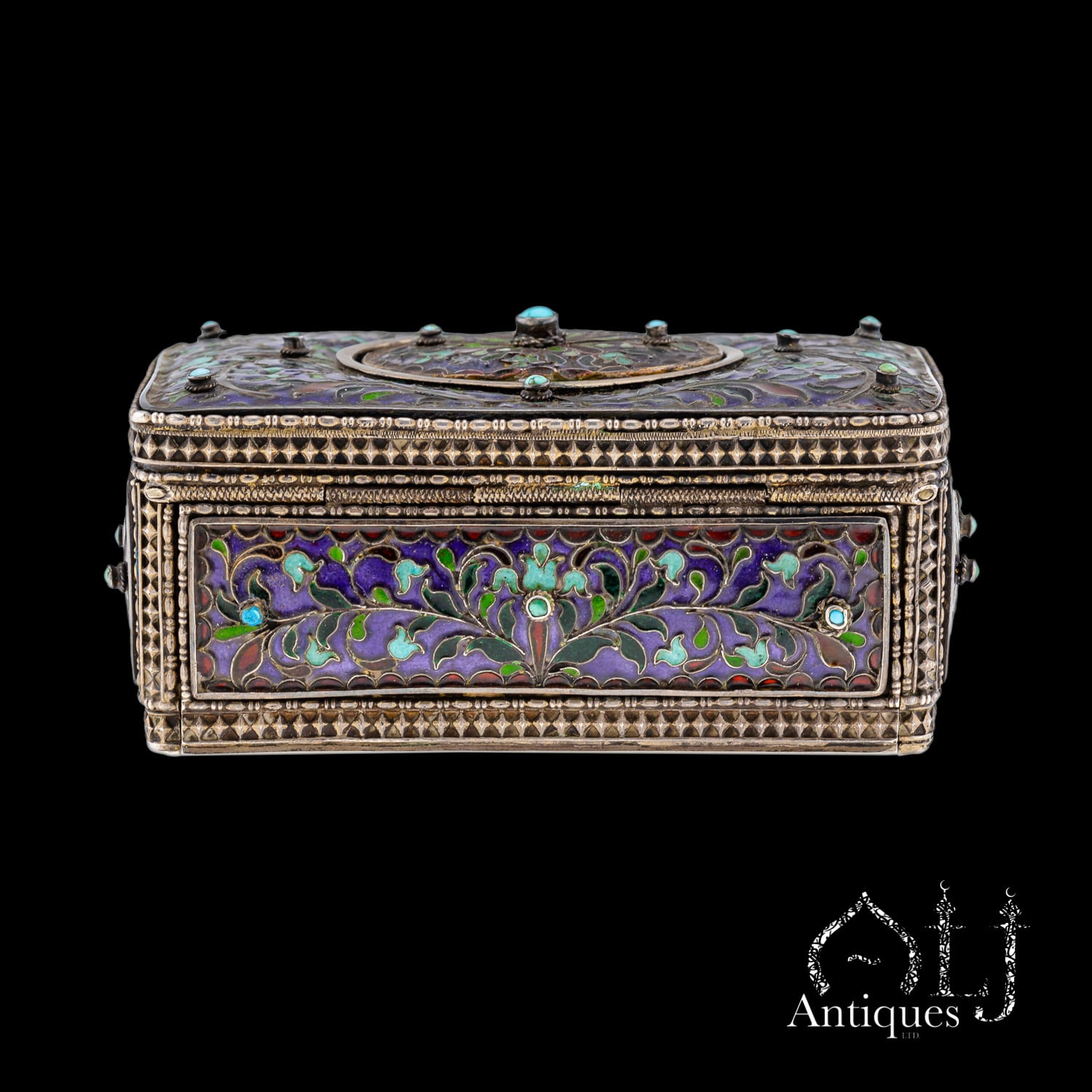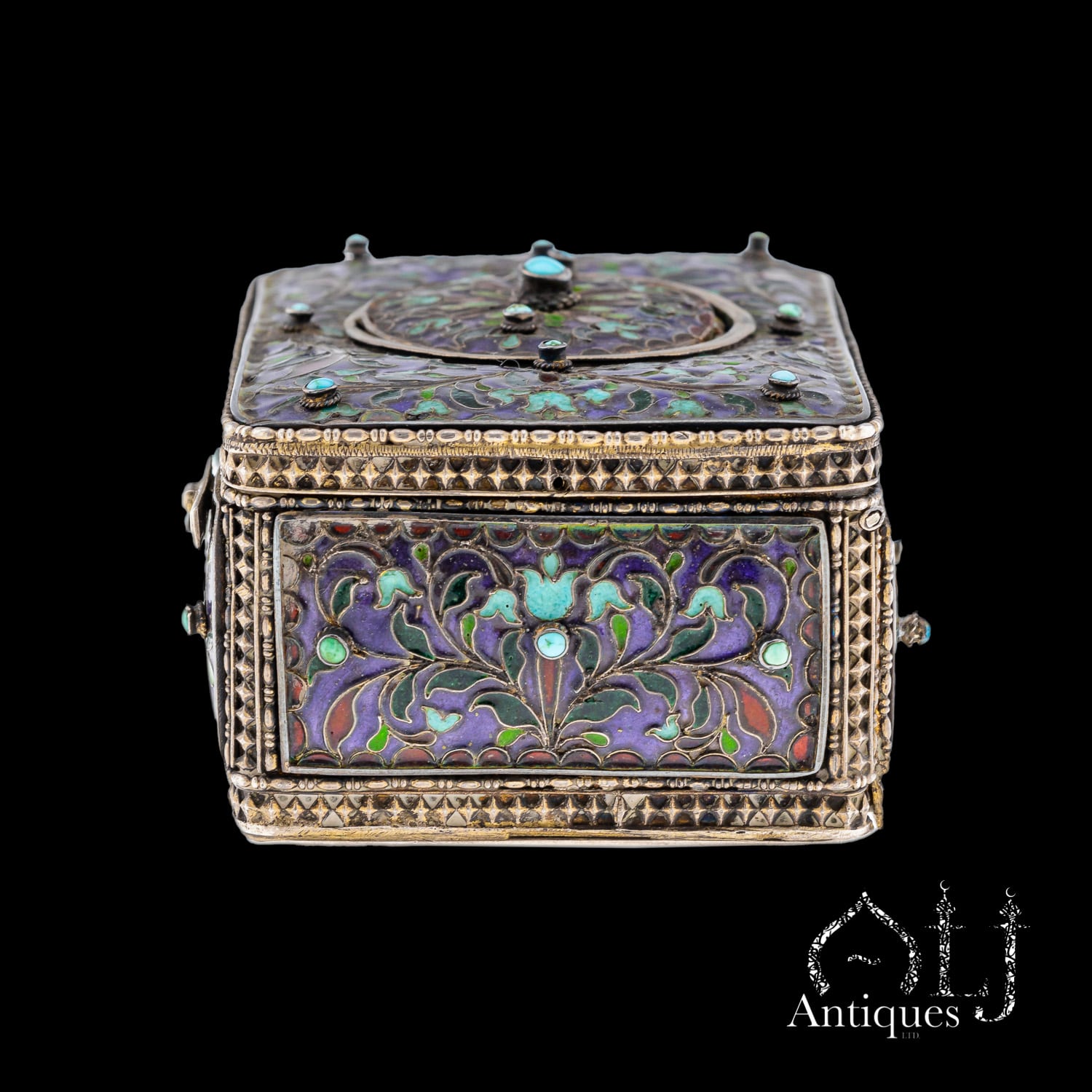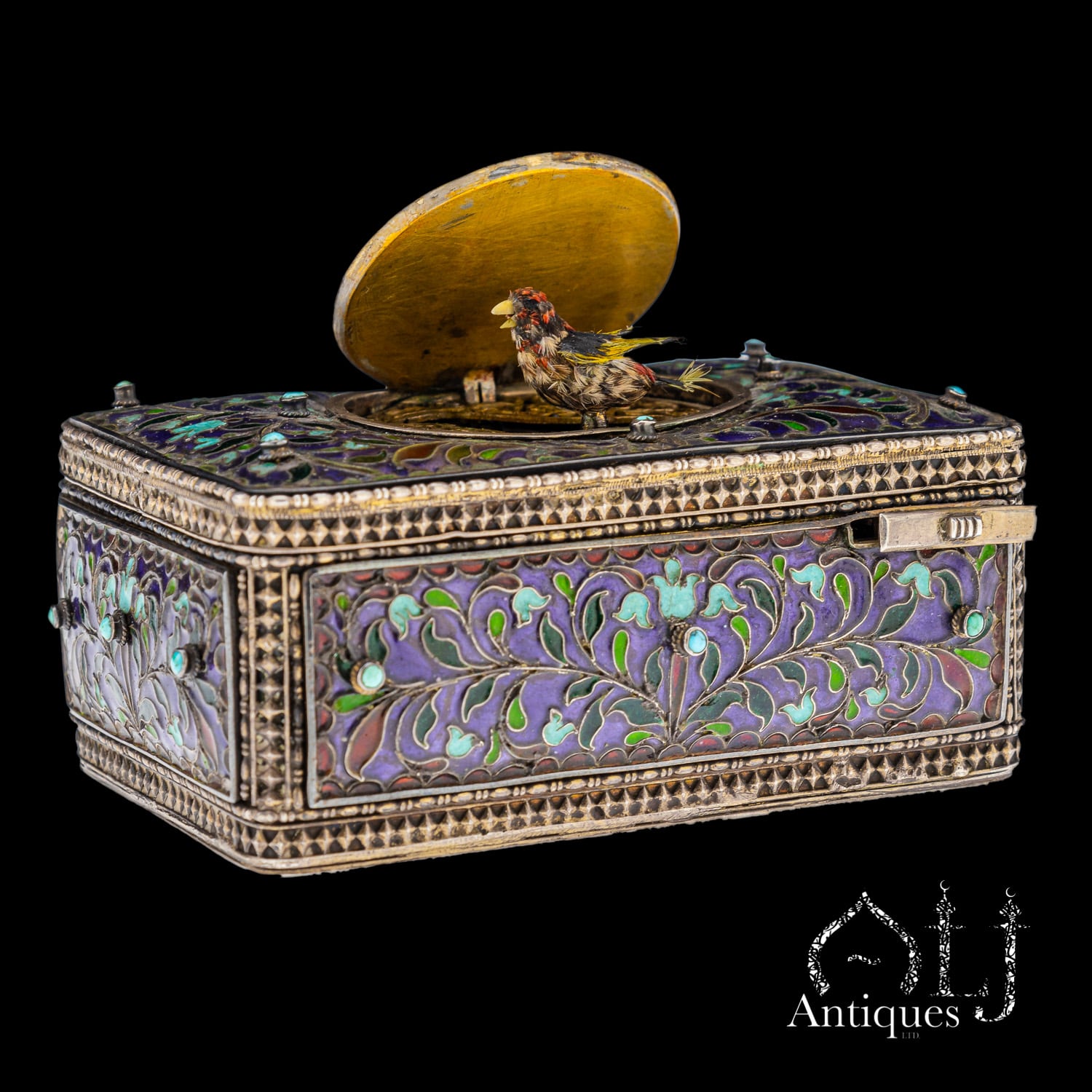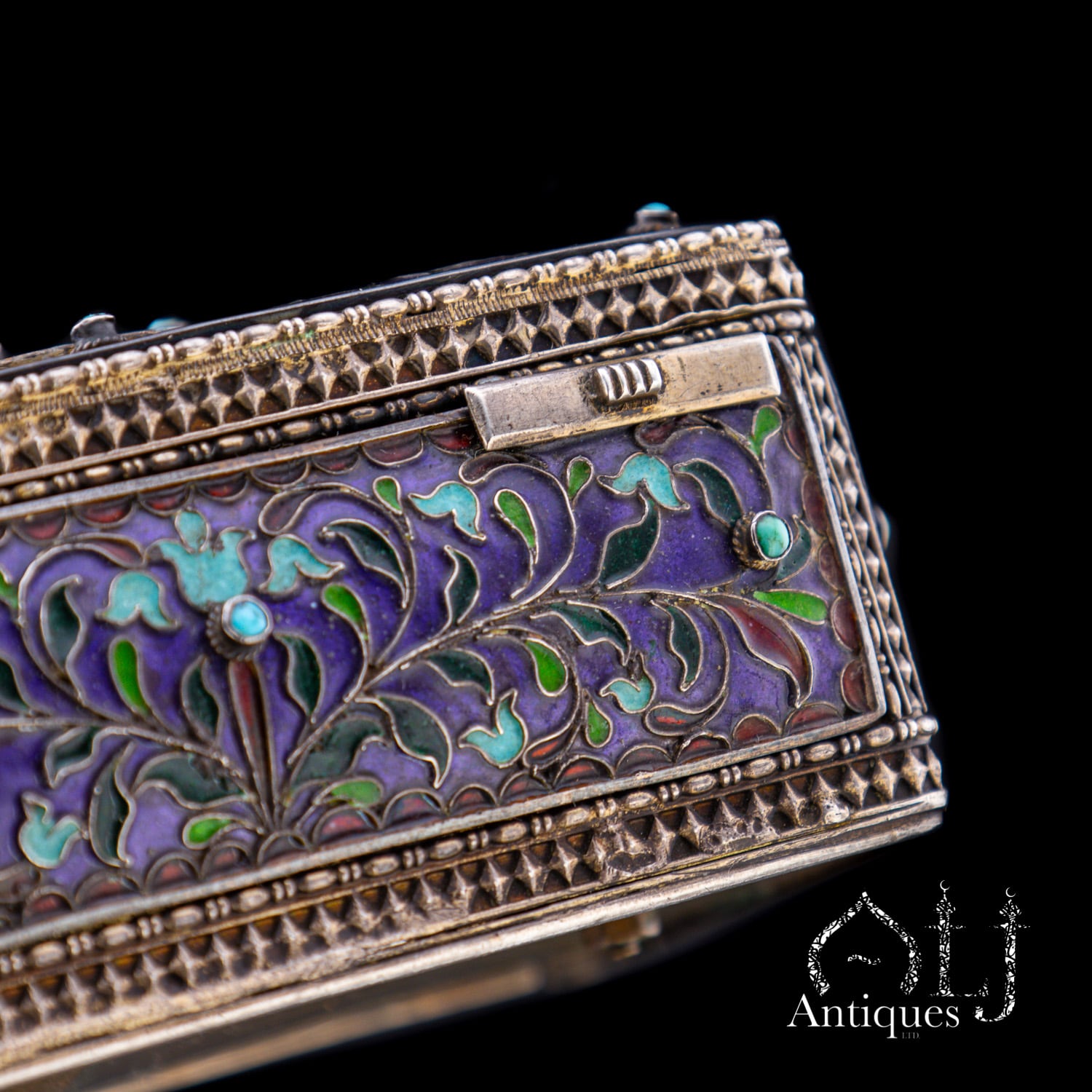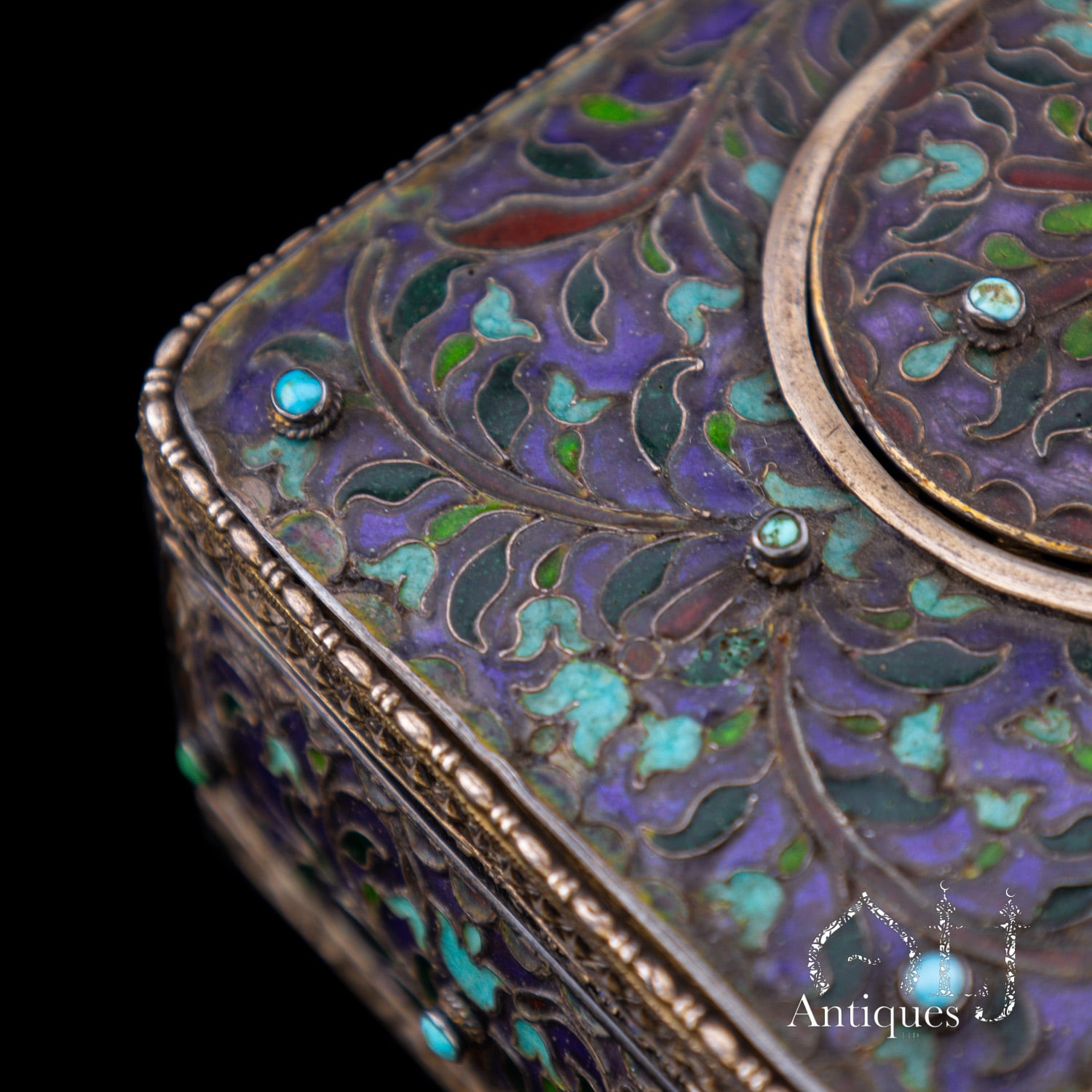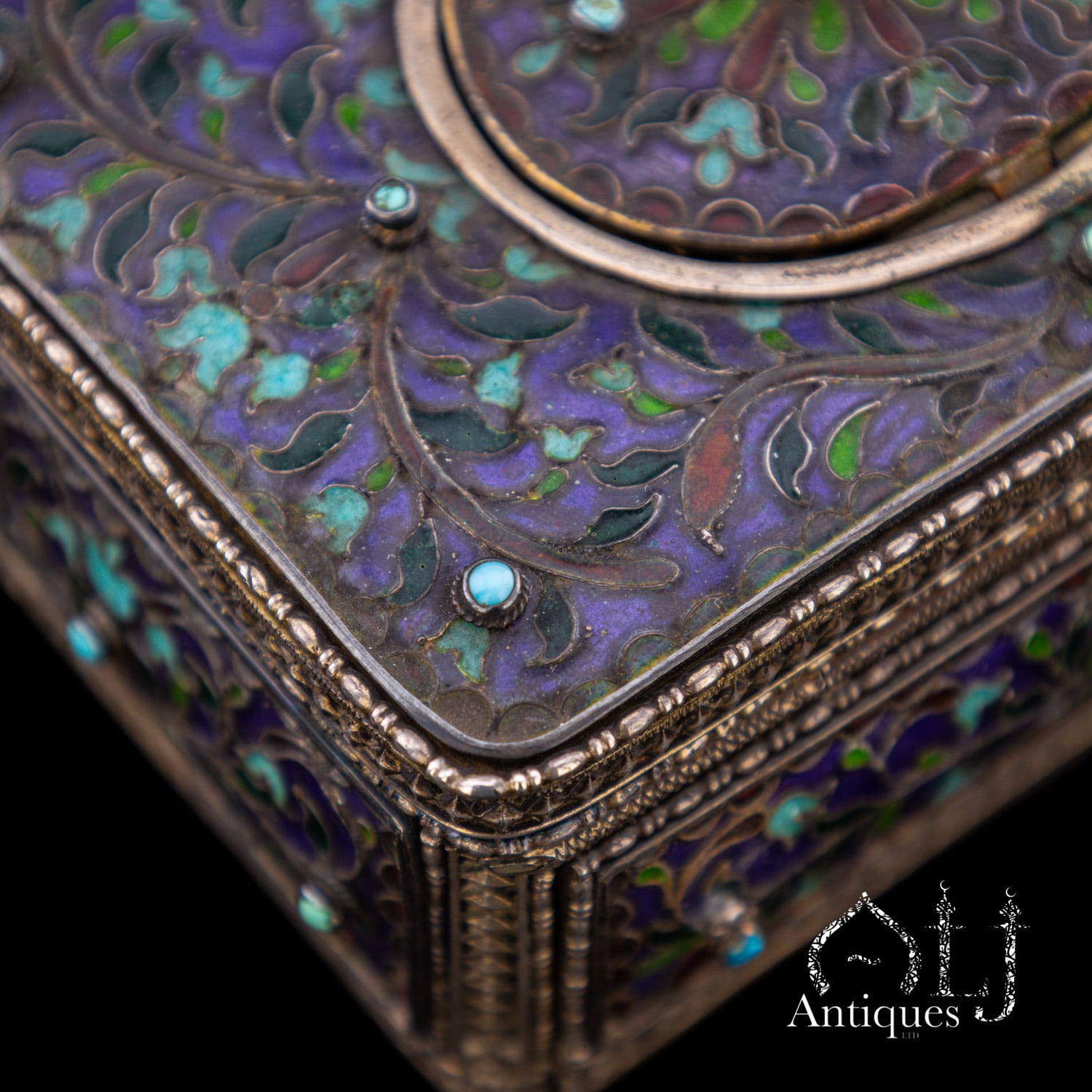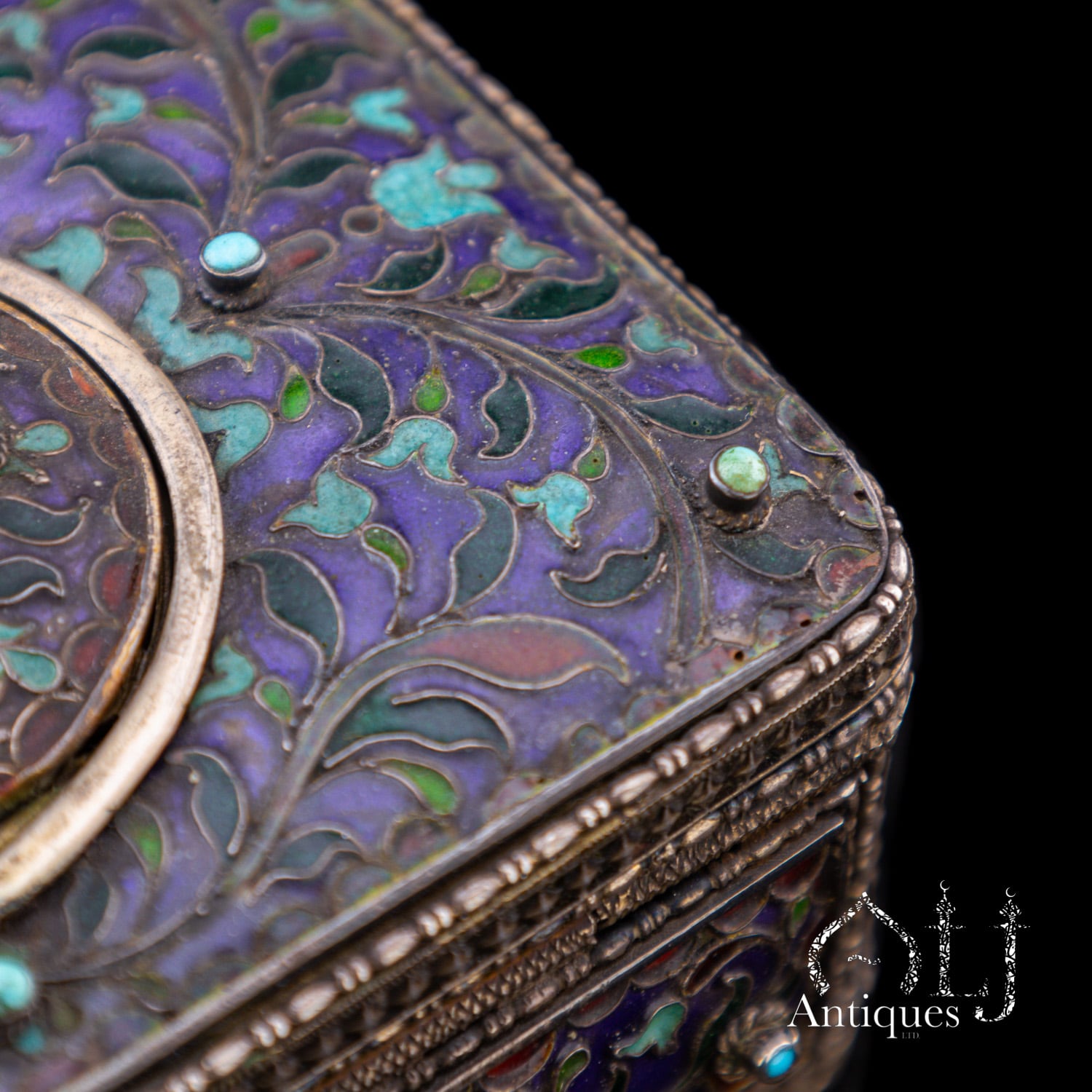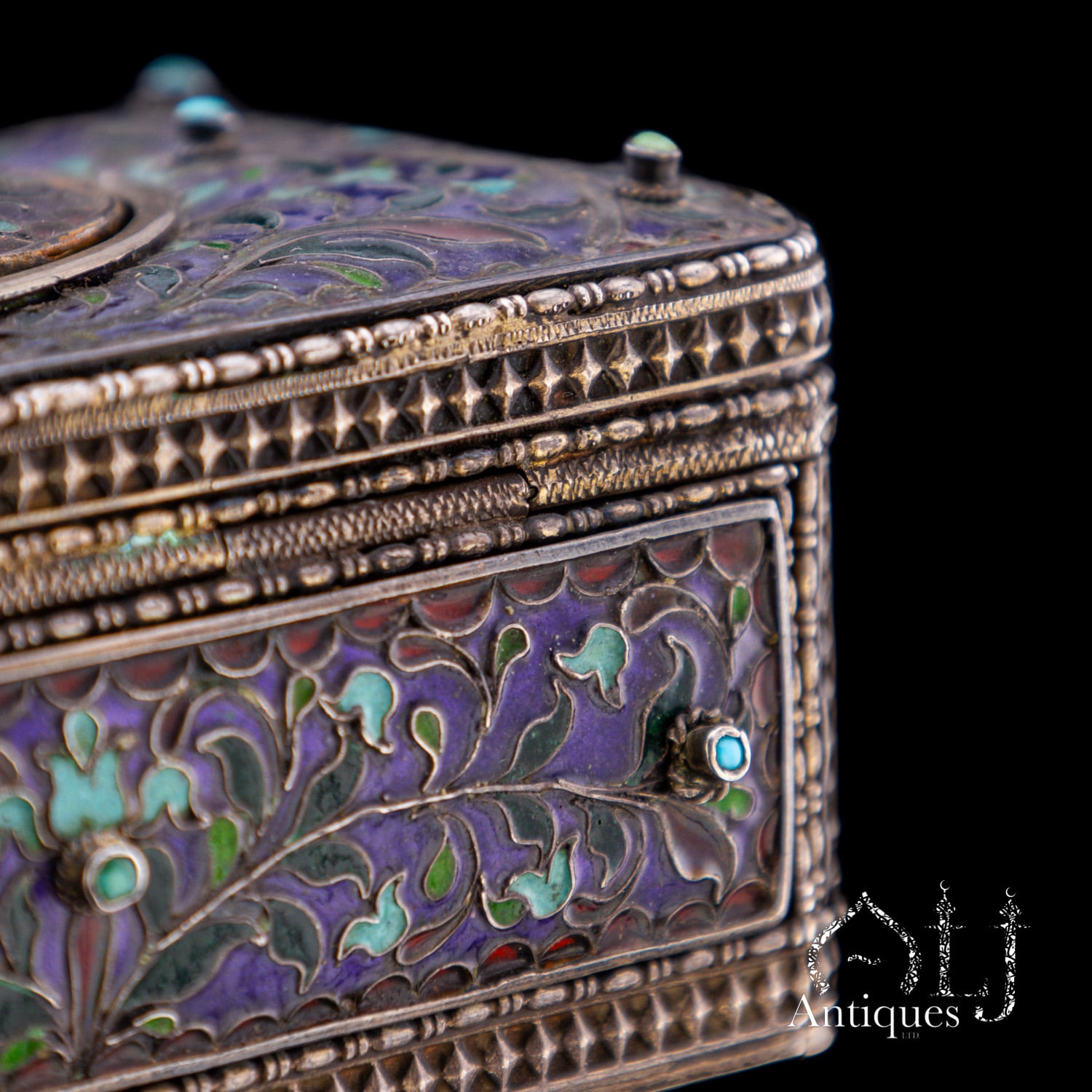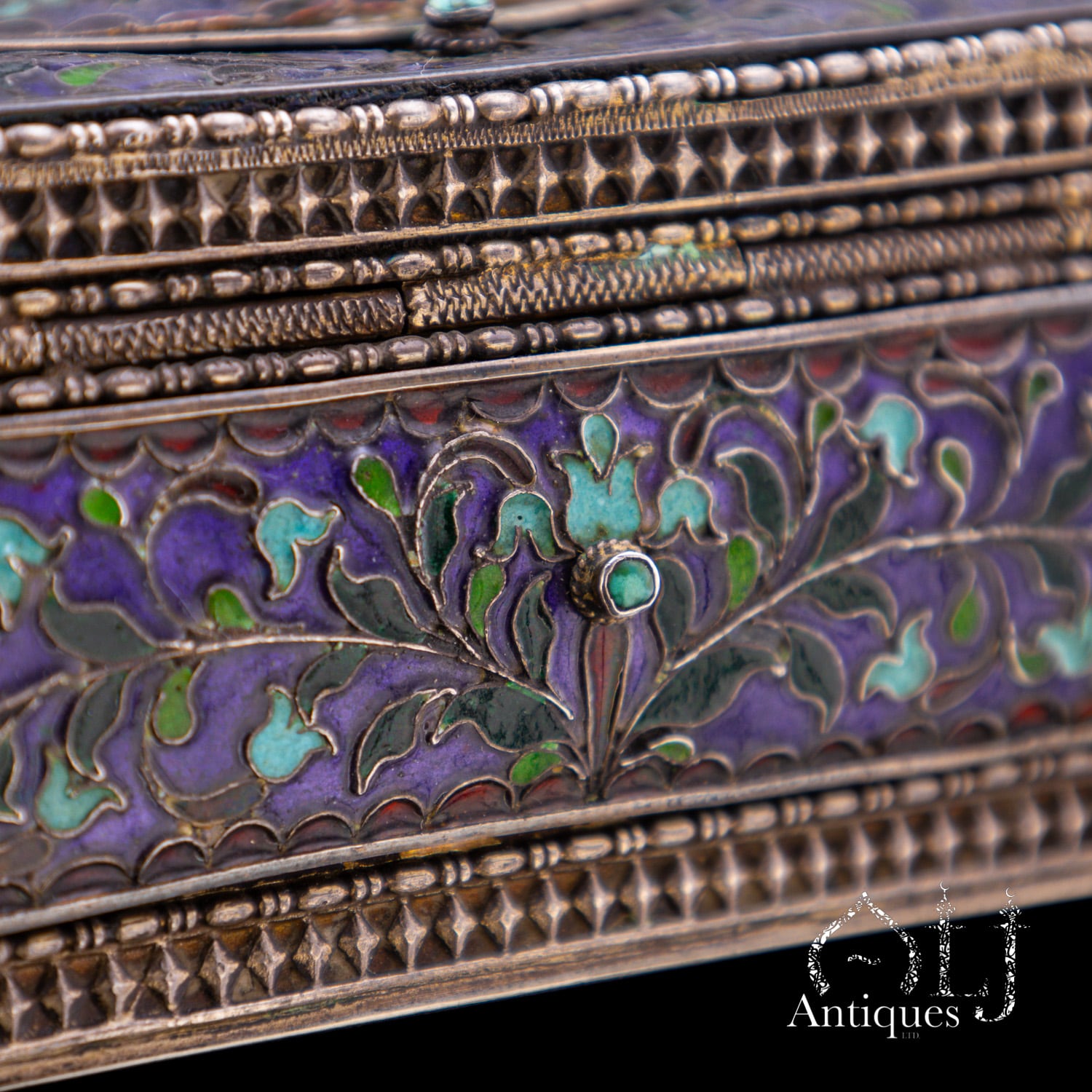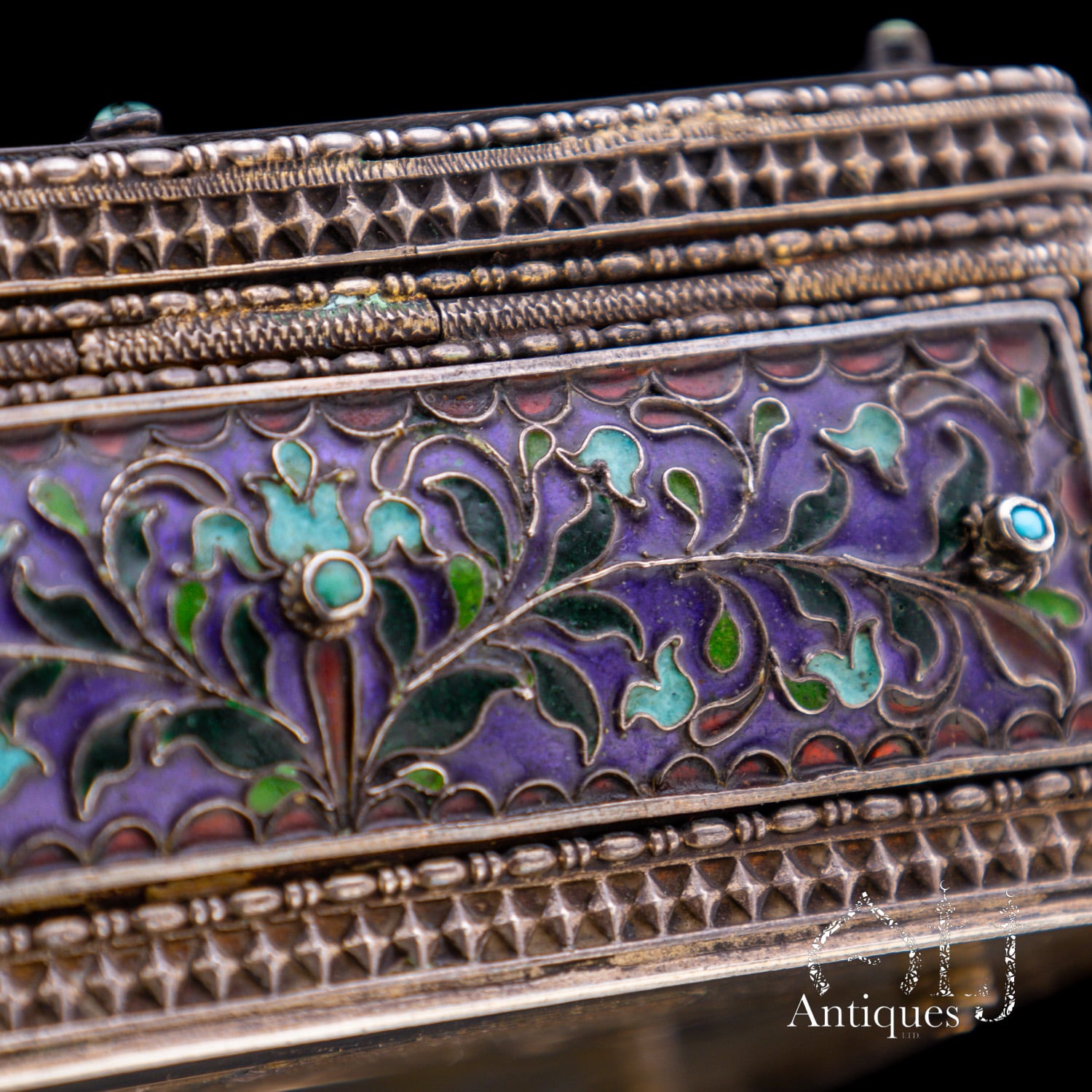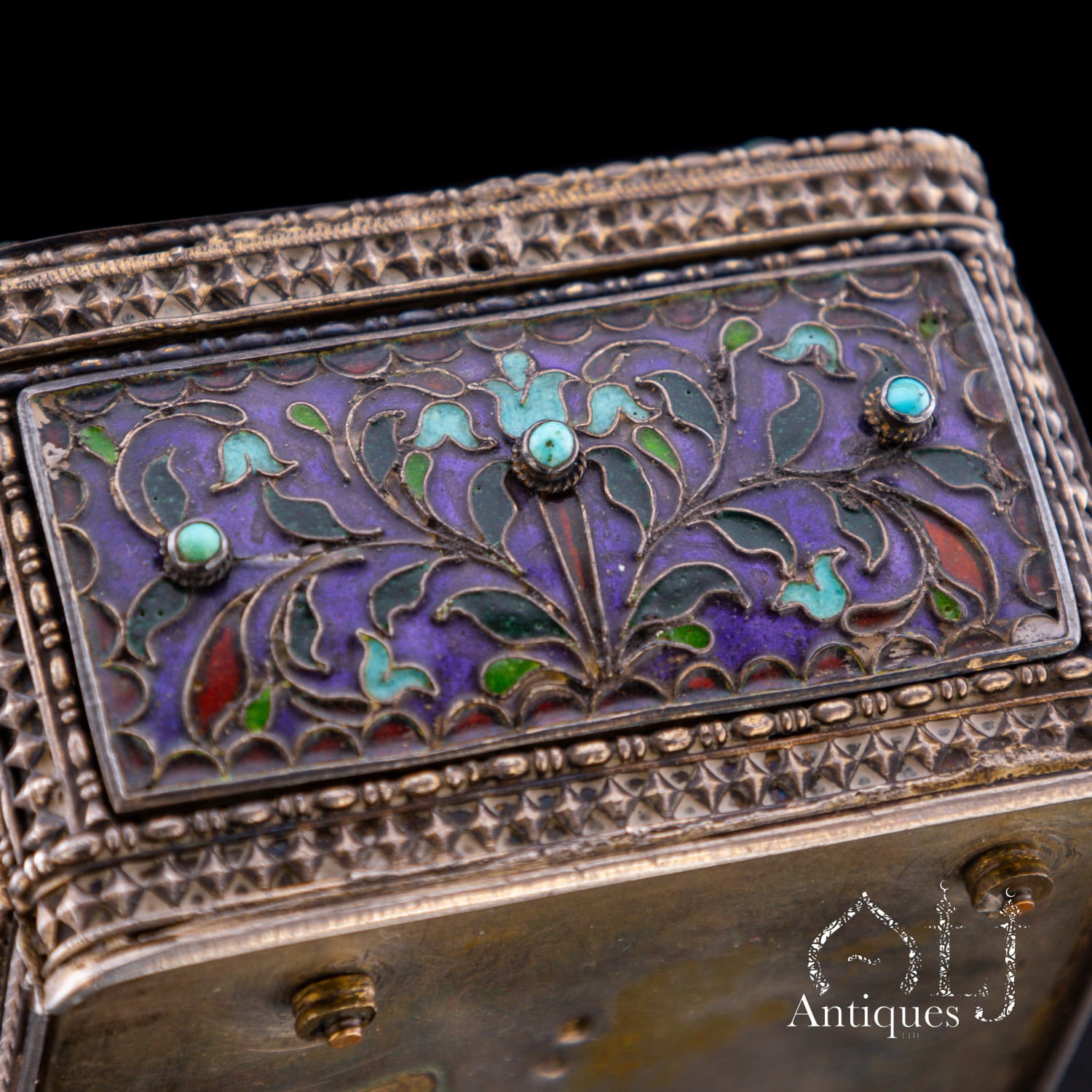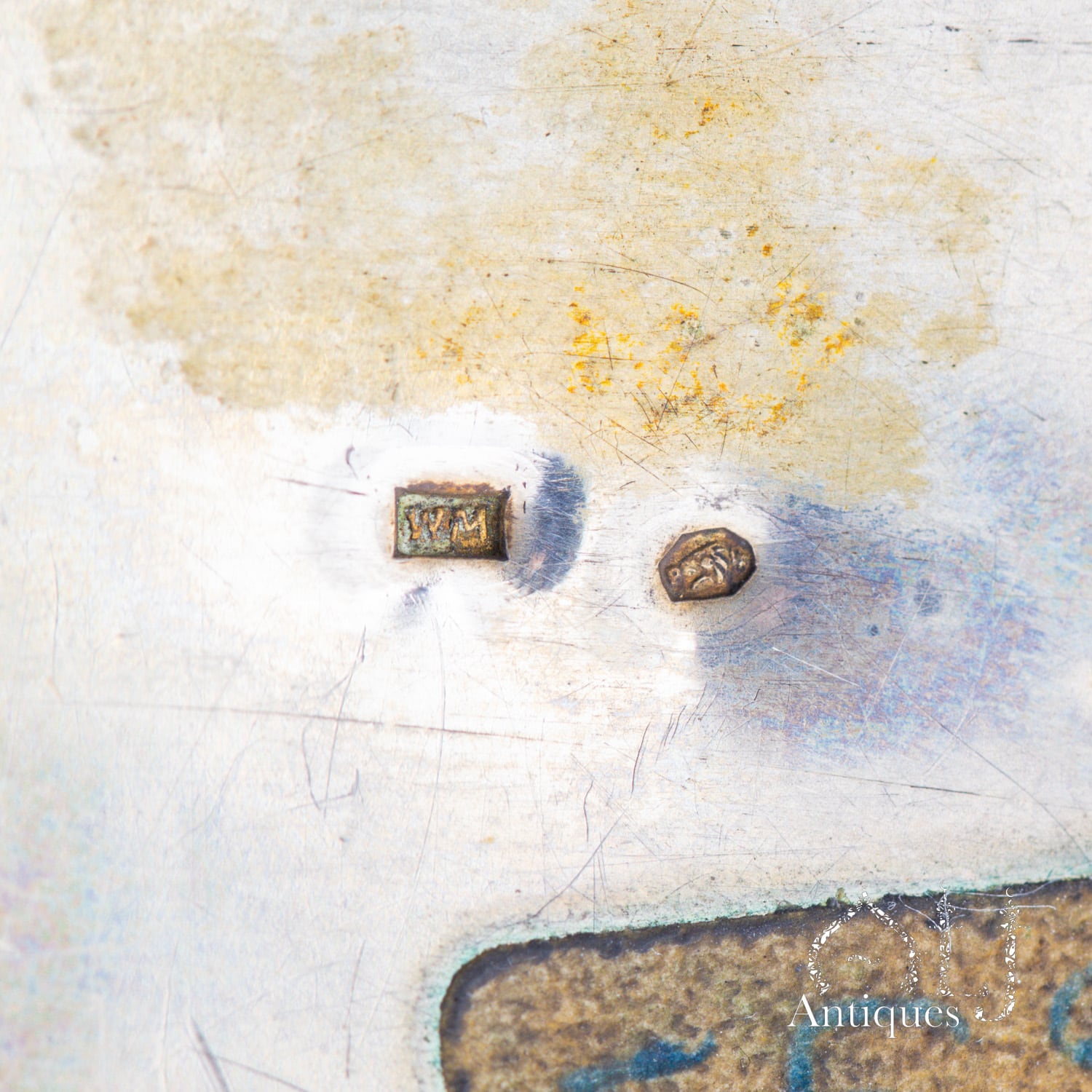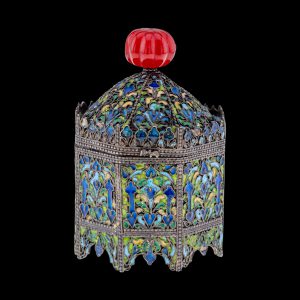Description
A Rare Armenian-Style Austro-Hungarian Silver-Gilt and Enamel Cloisonné Bird Automaton Music Box, Set with Turquoise Stones, Circa 1870s
Overview
Discover a rare and exquisite Austro-Hungarian silver-gilt and enamel cloisonné bird automaton music box, crafted around the 1870s. This extraordinary piece blends Ottoman, Armenian, and European artistry and is adorned with turquoise stones, showcasing exceptional craftsmanship and historical significance.
Key Features
- Cultural Fusion: The music box features intricate Ottoman floral motifs, including tulips and hyacinths with elongated stems and delicate branches, reminiscent of 16th-century Iznik ceramics and textiles.
- Exceptional Craftsmanship: Likely commissioned by an Armenian silversmith, the box displays Armenian silversmithing techniques such as parallel molded patterns, beaded rows, and rhombic decorations. These elements are meticulously soldered along the upper and lower rims, emphasizing fine artistry.
- Cloisonné Enameling: The decoration comprises silver wires forming floral designs, filled with vibrant opaque and champlevé enamels. The rich purple ground is accented with turquoise tulips and foliage in shades of green and red.
- Automaton Bird Mechanism: Beneath the hinged oval lid lies a singing feathered bird, activated by a bird-shaped key stored in a secret compartment at the back. The mechanism, likely Swiss or French, operates by inserting and winding the key in the keyhole beneath the box. When activated, the bird emerges, sings, and retreats as the lid closes.
- Turquoise Accents: The lid is adorned with one large turquoise stone and two smaller ones, complemented by additional turquoise embellishments along the upper surface and sides. Each rectangular panel is also set with three small turquoise stones, enhancing the luxurious appearance.
Historical Significance
This automaton music box embodies the cross-cultural artistry of the Austro-Hungarian period, integrating Ottoman, Armenian, and European influences. The box bears distinctive silver marks, including a lion’s head, the letter “P,” and the number “4,” confirming its origin.
The hinged lid reveals a pierced gilt silver screen and a singing feathered bird, a testament to the Ottoman preference for elaborate decorative objects. The floral ornamentation, featuring tulips and hyacinths with elongated stems and floral branches, aligns with traditional Ottoman designs seen in Iznik ceramics and textiles.
The Armenian craftsmanship is evident in the meticulous silverwork, including parallel moulded patterns, beaded chains, rhombic rows, and zigzag designs—techniques widely used in the Ottoman Empire.
A secret compartment at the back of the box holds the bird-shaped key, demonstrating thoughtful design and functionality. The automaton mechanism, with Swiss or German engineering influences, is finely tuned via an additional key slot at the base.
The Origins of Armenian Silversmithing and their influence on the world’s Gold and silversmithing industries:
Our hypothesis suggests that this exquisite item was likely crafted by an anonymous Armenian master silversmith working for a European silversmith. According to Osep Tokat (for more details, please visit our references section below), Armenian artisans have played a crucial role in the gold and silversmithing industries for centuries. Renowned for their unique skills, Armenian craftsmen were invited to work in numerous countries worldwide, leading many families to migrate in pursuit of this prestigious profession.
Armenian Silversmithing Across the World
In his book Armenian Master Silversmiths, Osep Tokat identifies key locations where Armenian silversmith workshops were well-established, including:
- Ottoman Empire: Cities such as Van (a major hub for gold and niello silverware production), Istanbul, Izmir, Sivas, Konya, Diyarbakir, and Trabzon (renowned for fine filigree silverware items).
- Persian Empire: Isfahan, Tehran, and Tabriz.
- Eastern Europe: Poland, Bulgaria, and Astrakhan in Russia. Notably, Armenian silver artifacts created for Russian tsars can be found at Moscow’s Military Museum.
- Caucasus Region: Tbilisi, Baku, Alexandroupolis and Karabakh.
- Middle East & North Africa: Aleppo, Antep, Cairo, Lebanon, and Iraq.
- Other Regions: Ethiopia and Lyon in France, where Armenian artisans significantly contributed to local silversmithing traditions.
Armenian Influence on European Silversmithing
The craftsmanship, techniques, and decoration of this piece strongly resemble those of other known Armenian silver artifacts. There is a high probability that a European silversmith, possibly in Austria or Hungary, employed an Armenian master to work in their workshop. Other similar musical boxes, crafted with filigree silver and intricate enamelling, further support this theory (please refer to our references for comparison).
Armenian Artisans in the Ottoman Empire
The Ottoman society placed great value on decorative arts, commissioning skilled Armenian artisans across various industries, including:
- Ceramics & Tile work: Used in palaces and mosques.
- Textiles: Producing fine woven fabrics and embroidery.
- Weaponry & Metalwork: Crafting high-quality jewellery, enamelling, and precious metal items for the elite.
Armenian artisans received orders from various provincial cities of the Ottoman Empire, as well as from other regions such as the Balkans, Mosul, and Damascus. Additionally, the Ottomans imported fine silverware from across the world, including Switzerland, Austria-Hungary, the Caucasus, Central Asia, and Russia, to meet the high demand for luxury items.
Conclusion
The legacy of Armenian silversmiths is a testament to their unparalleled skill and artistry. Whether in the Ottoman Empire, Eastern Europe, or beyond, their contributions to the world of silversmithing remain invaluable. This beautiful silver piece serves as a reflection of that legacy, connecting past craftsmanship with modern appreciation.
For references and additional details, please see our sources section.

